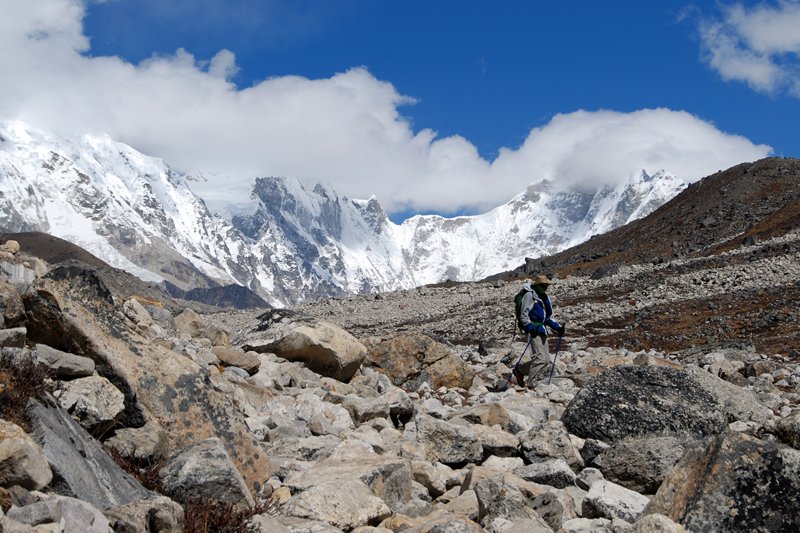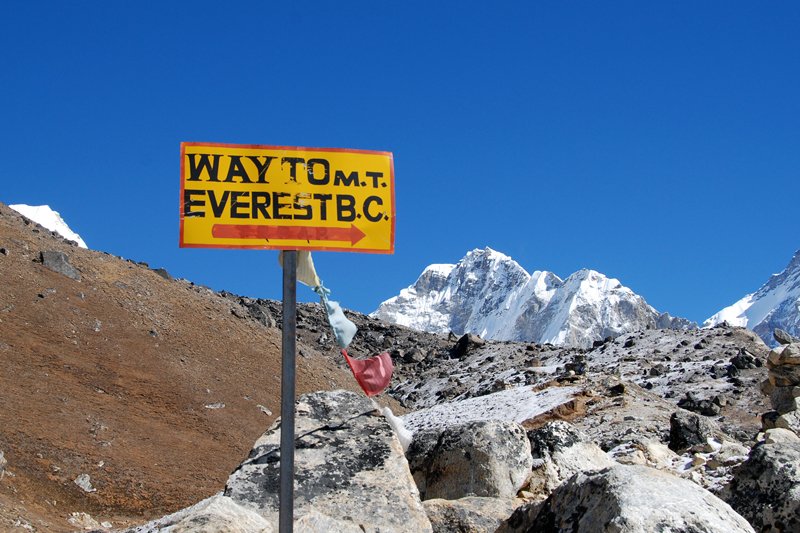
If there is one mountain that has captivated people it must be Mt. Everest (8.848m) the highest mountain in the world. Legends as George Mallory, Sir Edmund Hillary and Tenzing Norgay inspired many mountaineers. To reach the top of Everest became a dream to many.
Several trails lead to the roof of the world. In the early 1900s, Nepal was closed to people from the West. When George Mallory tried to reach the top of Everest in 1924, he had to do it from the Tibetan side. In 1948 Nepal opened up, permitting teams to visit the Everest region. When Hillary and Norgay conquered Everest in 1953, it was from the Nepalese side. Thousands have followed them in an attempt to reach the top. Many sacrifices have been made. Many have died in the attempt. But the interest in the Himalayas grew. In the 1960s the region started to attract others than mountaineers. Since then, walking to Everest Base Camp have come to be regarded as the ultimate trek. Still it is one of the world's best-known treks.
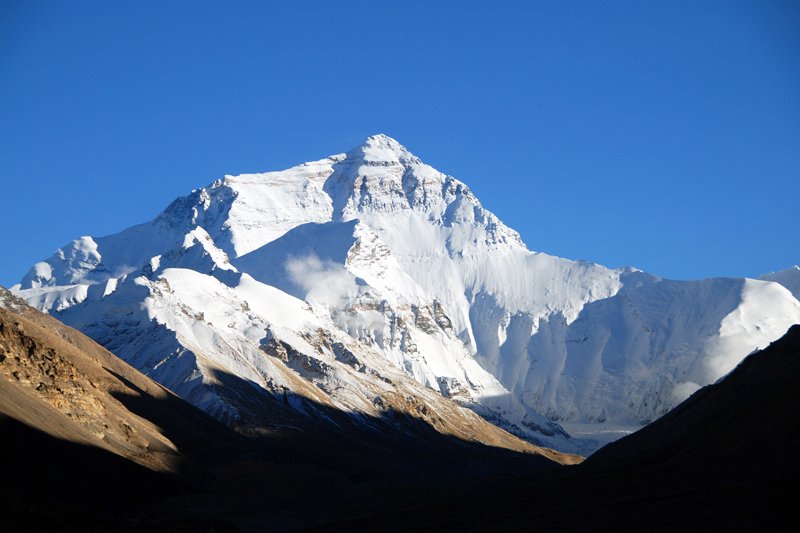
Everest seen from Rongbuk in Tibet
When travelled in the Himalaya region, I went to both Tibet and Nepal. Driving from Lhasa to Katmandu, crossing the Himalayas and visited Everest Base Camp (5.200m) on the Tibetan side. It is possible to drive up to Rongbuk guesthouse. From here it is only a few kilometers to walk to base camp. You see Everest from the guesthouse (photo above) To visit Tibet first, also helped me to acclimatize. The first days in Lhasa I felt the altitude, but was fine in Nepal.
In Nepal you cannot drive to base camp. The only way is walking. I joined a tour, starting and ending in Lukla, following more or less the same route both up and down. It took 8 days up and 4 days down. Because of the altitude one has to ascend slowly. Booking through a tour agent ensured everything was taken care of: transportation, accommodation, meals, permits, a list of what to pack and how to prepare. You can prepare for the walk, but not for altitude unless you do as I did by visiting Tibet first. Now, a brief describtion day by day.
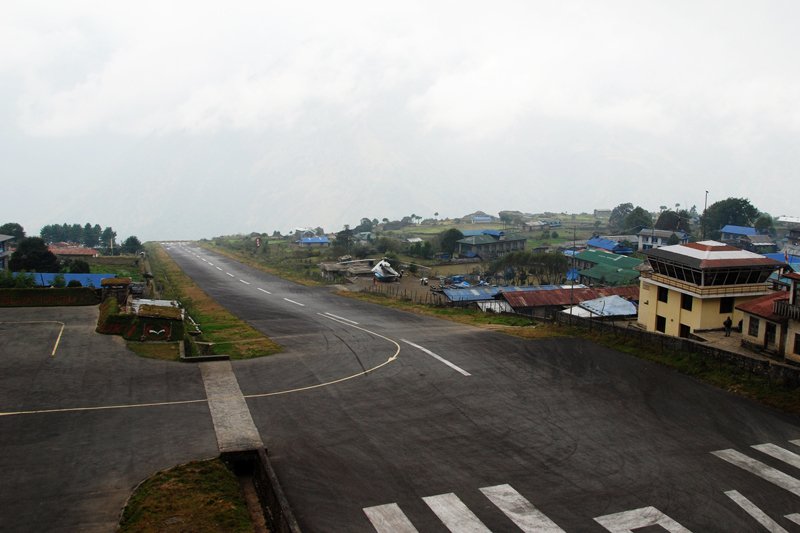
Lukla airstrip
Day 1: Katmandu – Lukla (2.800m) – Phakding (2.300m)
After a few days in Katmandu, I left the city and the noise of it behind me, to seek solace in the Himalayas. Started with a short flight to Lukla. A small town on the mountainside. It has one of the most amazing airfields I have seen! A runway which is angled upwards! Supposedly to help the planes slow down since the runway is short. The first day was a pleasant walk in a green landscape with vegetable fields.
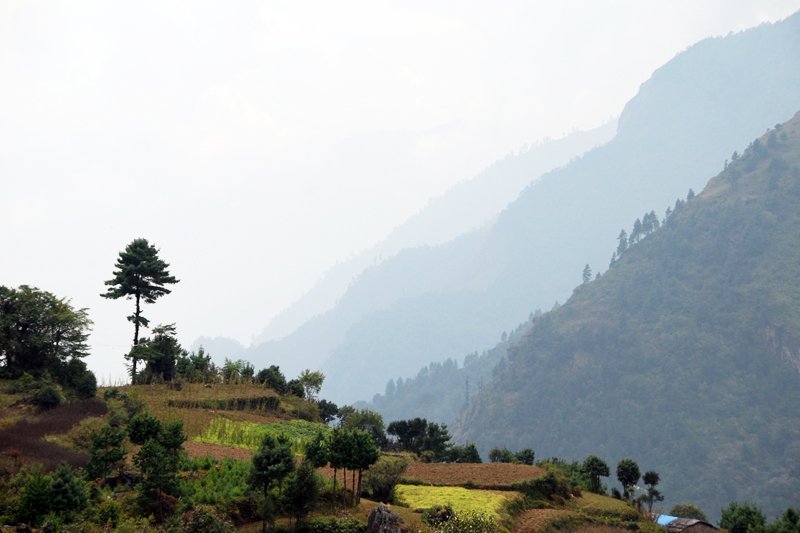
On the way to Phakding
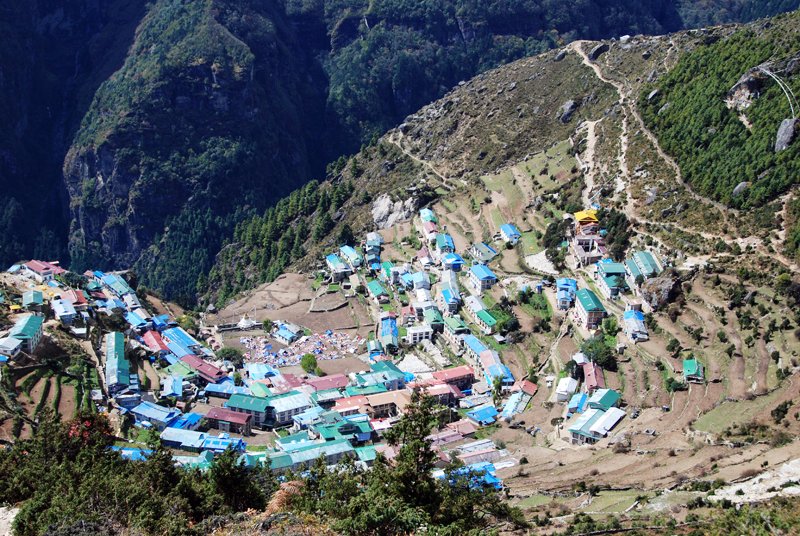
Namche Bazar
Day 2 & 3: Phakding – Namche Bazar (3.440m)
On our second day we entered Sagarmartha National Park, which was established in 1976 to protect this area of 1.148 km2 and UNESCO world heritage site. The permit was obtained here. Crossing the last and highest suspension bridge was a real dizzying experience! I stared right into the back of the guy in front of me! Then a long, tough climb up to Namche started. 700 m. uphill! I was completely exhausted when we arrived our tea-house. Most people stay two nights here, to acclimatize and help the body adapt to altitude. Namche Bazar is the main town and the largest of the Sherpa settlements in the Khumbu region. It has a large number of hotels, tourist shops, bakery, internet cafes etc. It has everything a trekker might need, so no worries if you have forgotten something! Great to have an extra day in the “city”!
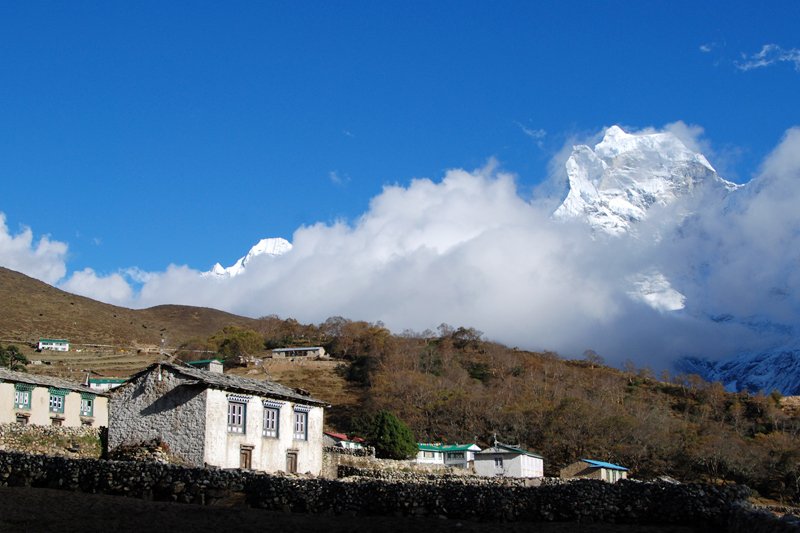
Phortse
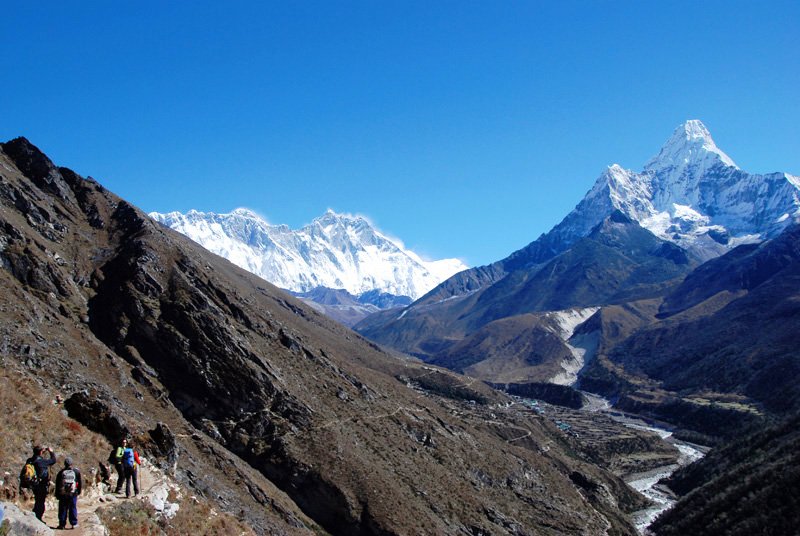
Lhotse & Everest to the left. Ama Dablam to the right
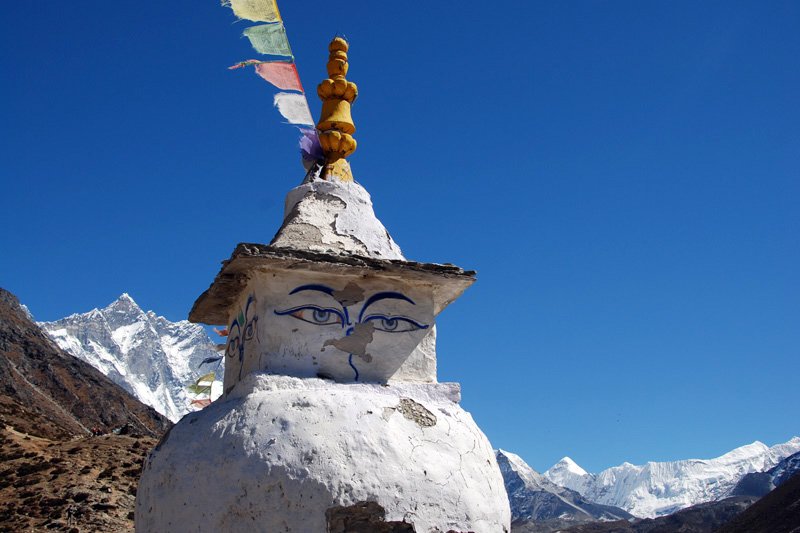
Arriving Dingboche
Day 4, 5 & 6: Namche Bazar – Phortse (3.800m) – Dingboche (4.410m)
The trail to Phortse follows a yak trail on the edge of the mountain side. An easy trek. We also got the first glimpse of Everest. Next day we continued to Dingboche. That was a long day, but we got a closer view of some of the worlds highest mountains. Dingboche is located in a valley between Lhotse (8.501m) on one side and Ama Dablam (6.856m) on the other side. Amazing sight! Again an acclimatization day. At this height some started getting light headaches.
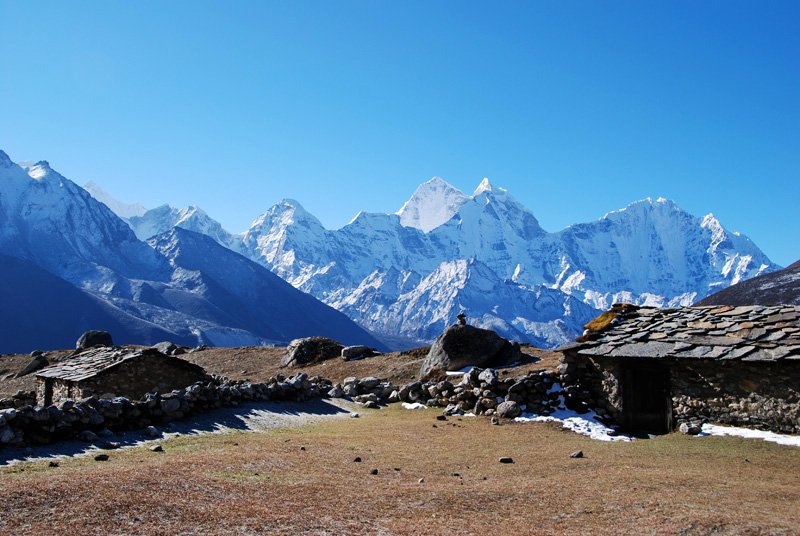
Shelters for yak herdsmen
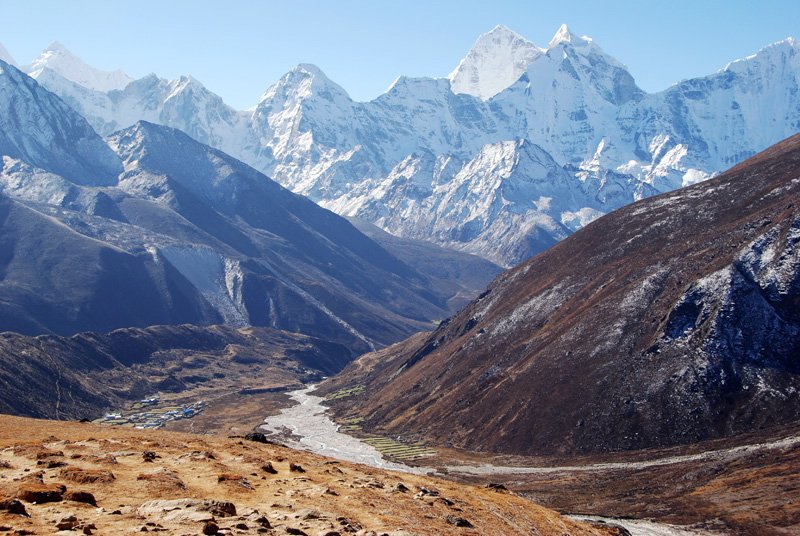
Pherice in the Khumbu valley
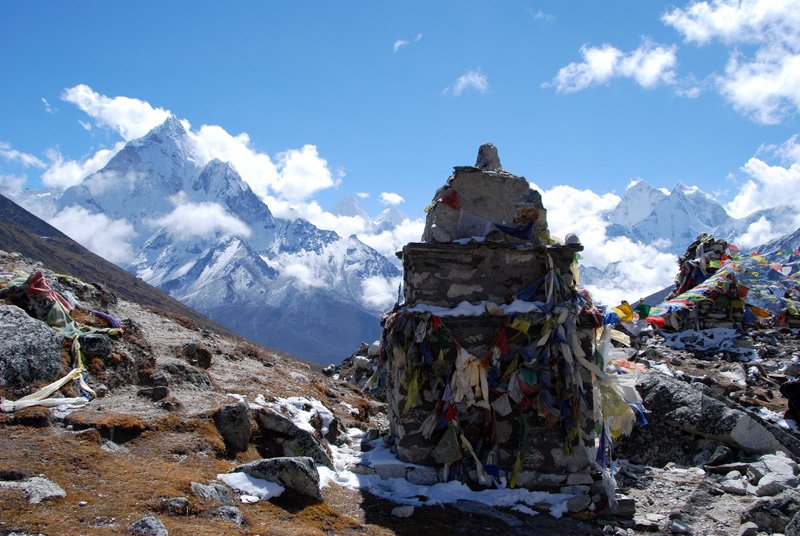
In memory of those who died on Everest
The mountains which marks the border to Tibet
Day 7: Dingboche – Lobuche (4.940m)
The trail follows the ridge above the Khumbu valley. From here we saw the village of Pherice. The terraine is wild and desolate with dramatic mountain views. The morraine of the Khumbu glacier, became a walk in a boulder- strewn slope as we walked to reach Chupki Lhara (4.840m) – a ridge which on top have large heaps of stones with prayer flags in memory of mountaineers who died trying to reach the top of Mt. Everest. One of them is built in memory of Scott Fischer. The American mountaineer and guide who died along with seven others in the May 1996 Everest tradegy. The deadliest season in the history of Everest. The journalist Jon Krakauer attended this climb. He tells his story in the book “ Into thin Air”.
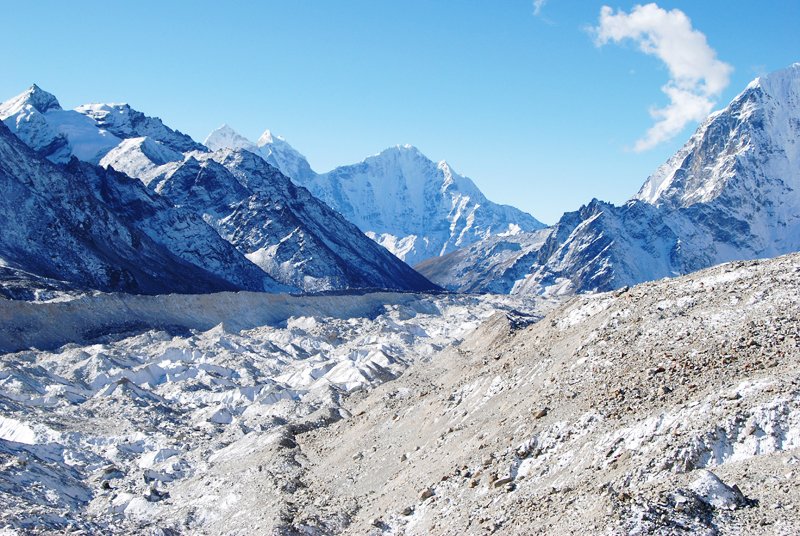
Khumbu glacier
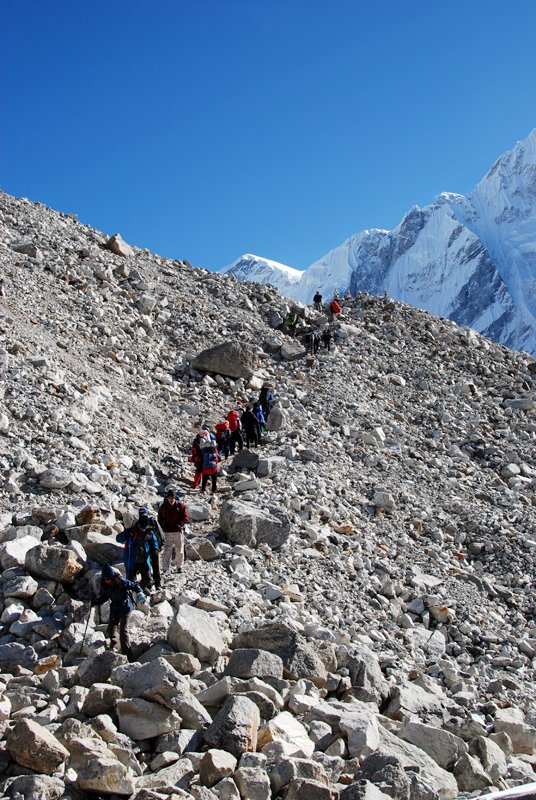
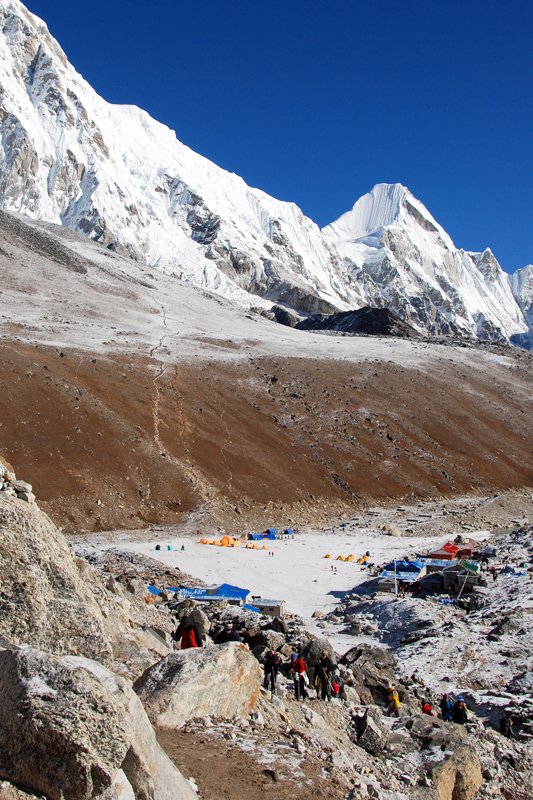
Gorak Shep with the trail to Kala Patar
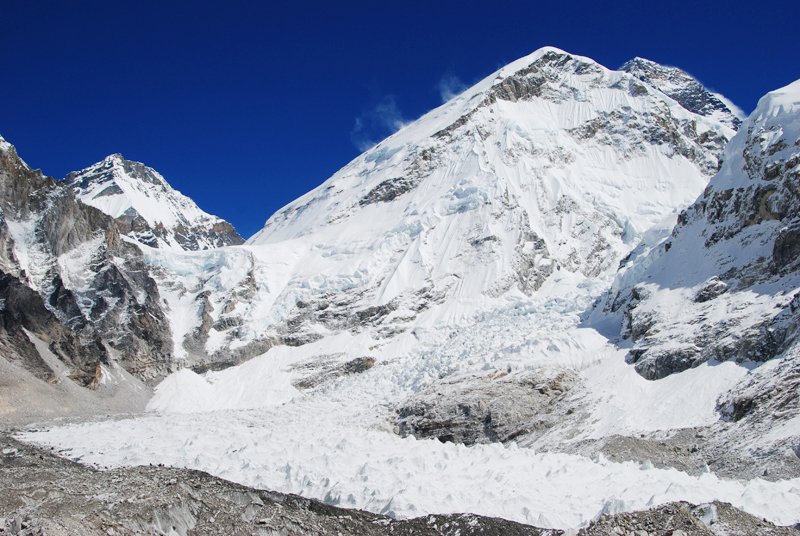
The glacier and the South Col
Day 8: Lobuche – Gorak Shep (5.170m) – Base Camp (5.300m) – Gorak shep
The hardest part. The distance itself is not long, but rocky terrain along with altitude made this a long and hard day. The last few kilometers was done only on willpower. It is not possible to see Everest from here, but the South Col of Everest, the starting point of climbing expeditions, is right in front. One can only imagine how it feels climbing up that glacier! A dramatic sight. I wondered how it must be to climb the mountain. Many trek from Gorak Shep to Kala Patar because the view of Everest is better from there. Back in Gorak Shep we did see the sun set on Everest.
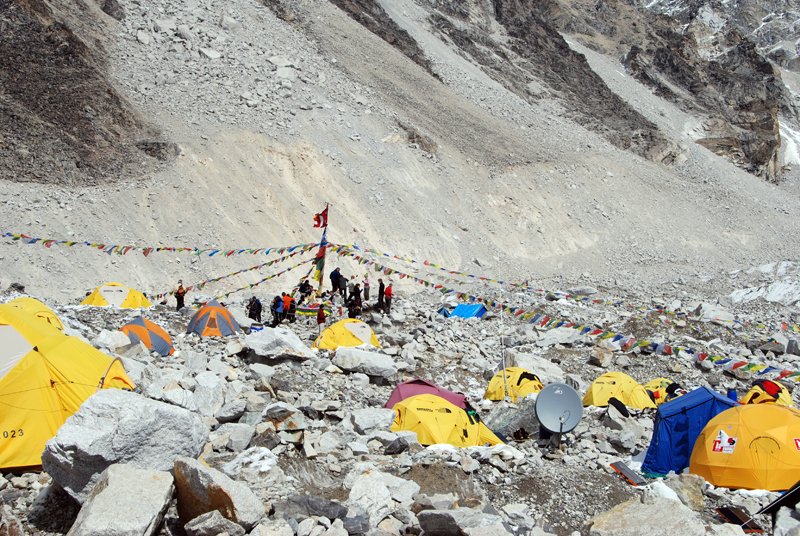
Everest Base Camp
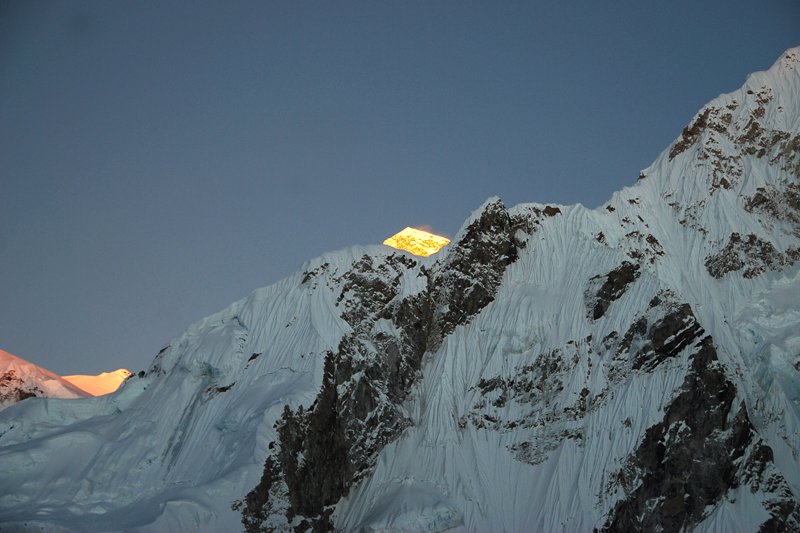
Sunset on Everest
Day 9-12: Gorak Shep - Orsho (4.000m)– Namche Bazar – Phakding – Lukla
The way back to Lukla takes much less time, because of going downhill. We stayed one night in Orsho before crossing to the other side of the river the next day, visiting beautiful Tengboche monastery, which has been important to most Everest expeditions, starting with the one in 1953. The trail follows the river, more or less back at the starting point.

Walking through the village of Pherice
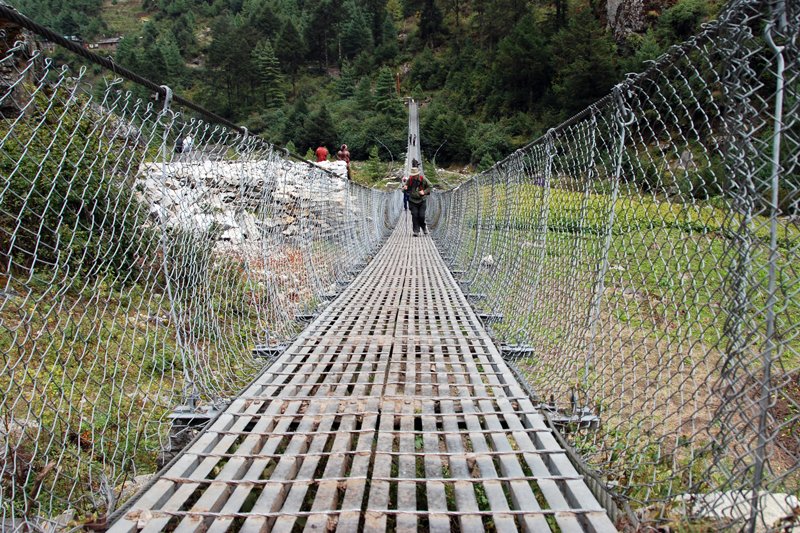
The last bridge
After spending so many days in the mountains, returning to “civilization” and the chaos and noise in Katmandu was almost a chock! My next trekking tour is Patagonia in 2019.
Please do follow if you want to keep up with my next travel story. Any upvotes or resteems are hugely appreciated!
Other travel stories, check out :
PALMYRA - ancient city in the syrian desert
MYANMAR - watching the world go by on the yangon circular railway
THE NAMIB DESERT - an otherworldly landscape
GREENLAND - continue to disko island (part 2)
GREENLAND - a world of ice and snow (part 1)
ILE AUX COCOS - an island in the sun (Roderique part 2)
THE ISLAND OF RODERIQUE - part 1 - a hidden gem in the indian ocean
THE ANCIENT TEMPLES OF BAGAN - from sunrise to sunset
AN ARCTIC ISLAND RETREAT – and one of the most extreme places
PORLWI BY NATURE – a cultural festival and a feast for the senses
«FOOD ON FOOT» - Street food in Hanoi
GHOSTTOWN – when people moved out, the sand moved in....
U.J
Kristiansand, Norway
All the photoes are mine, Ulla Jensen (flickr, Instagram and facebook)
[//]:# (!steemitworldmap 27.986715 lat 86.917421 long Mt. Everest Base Camp trek - walk among some of the highest mountains in the world d3scr)
